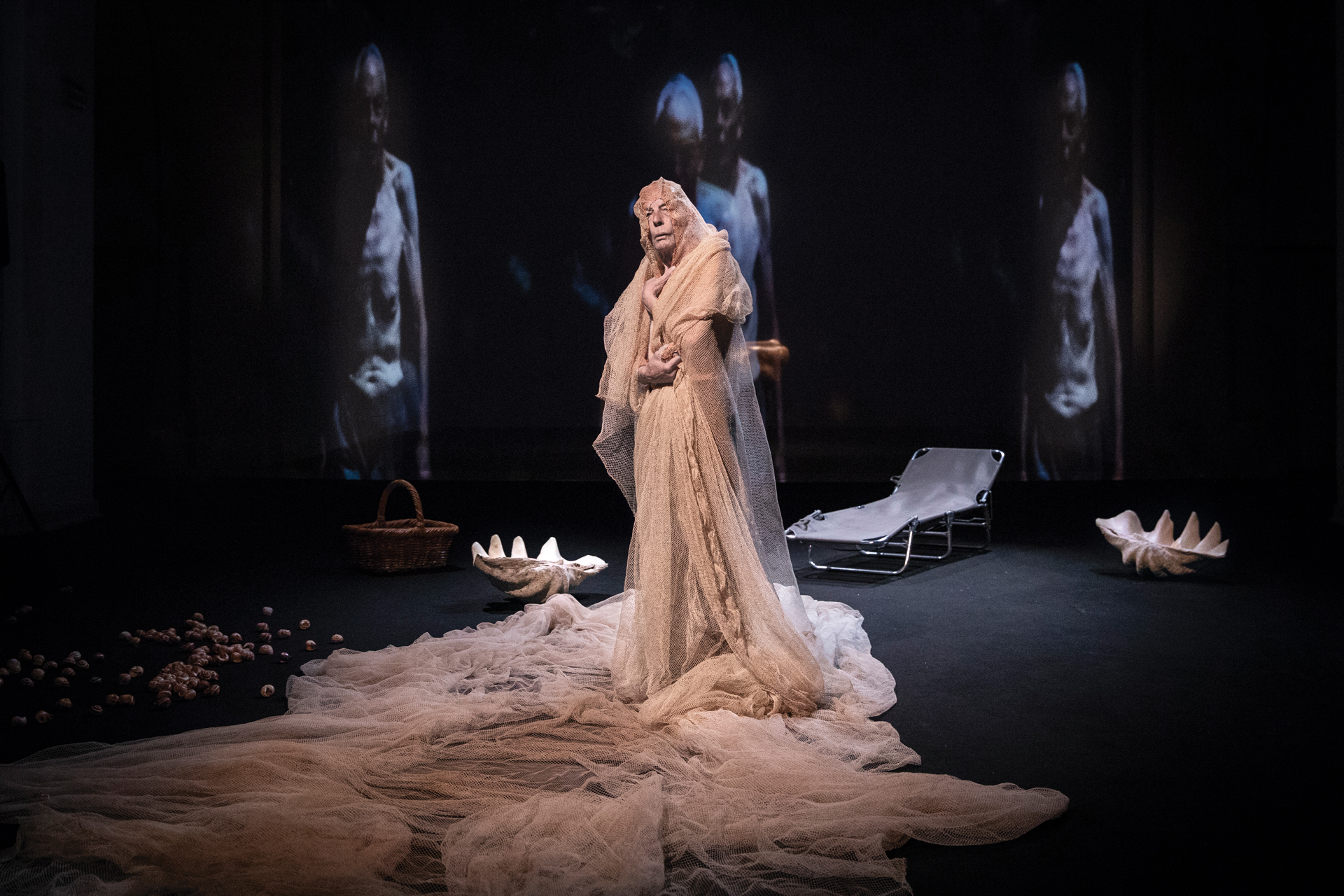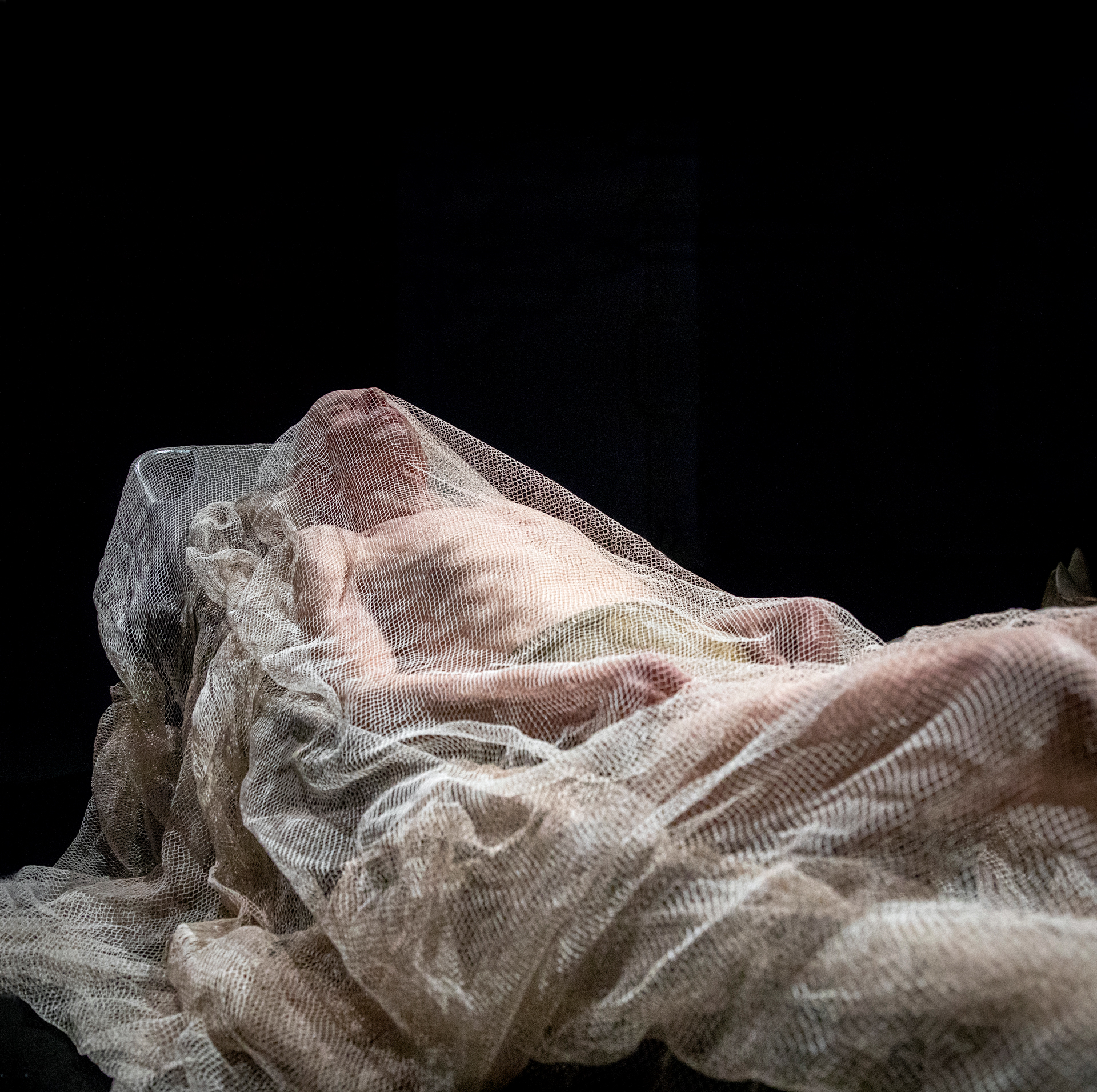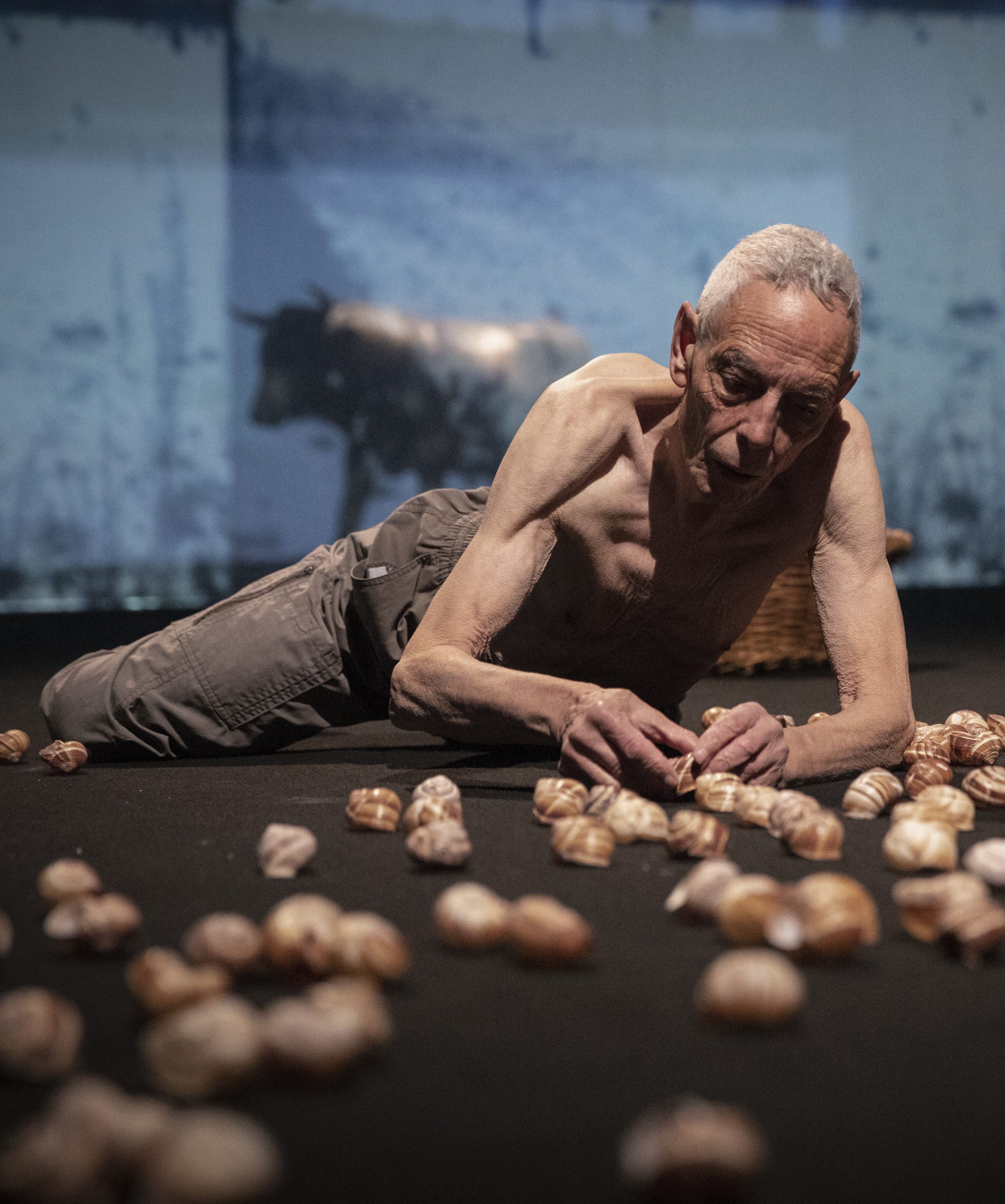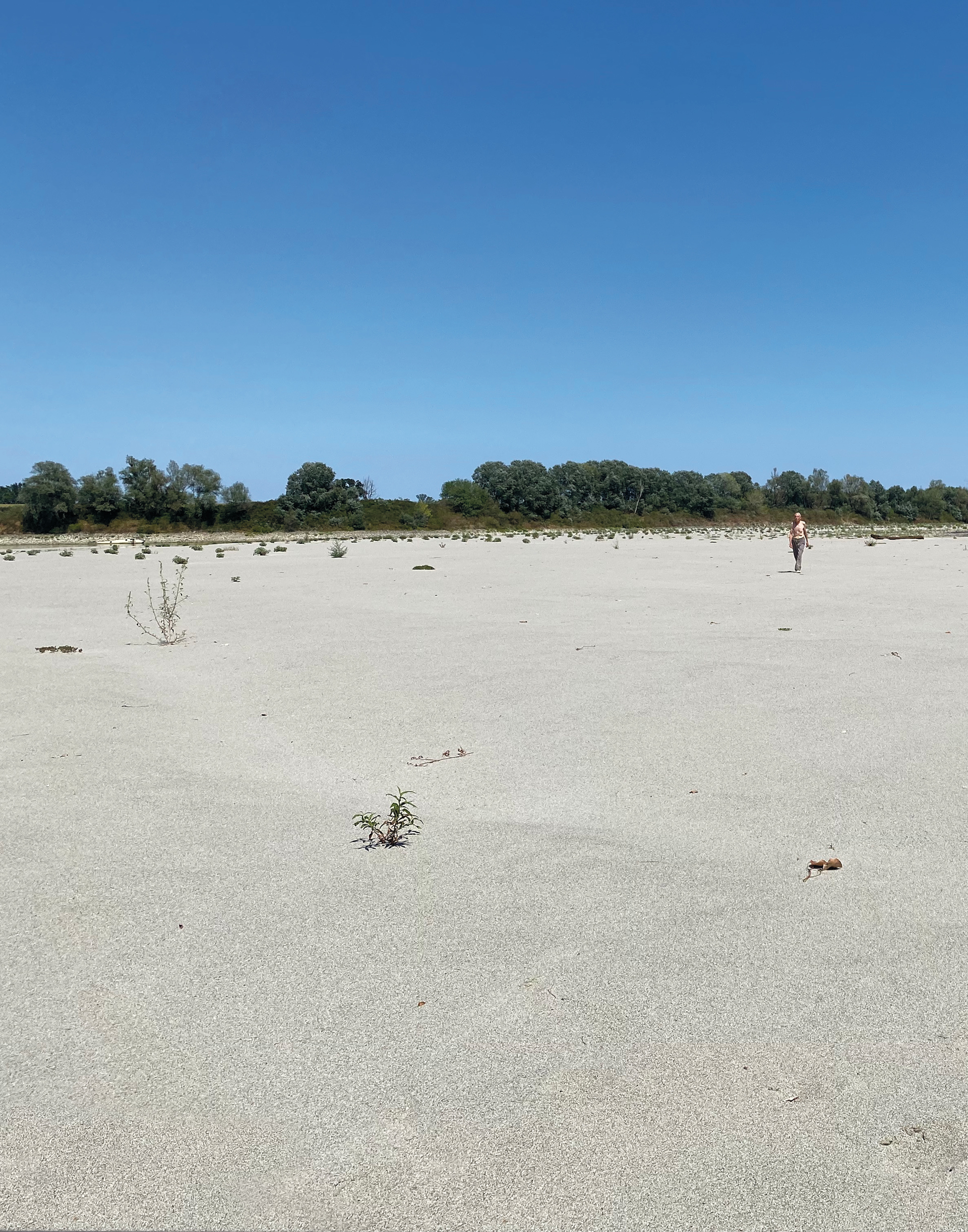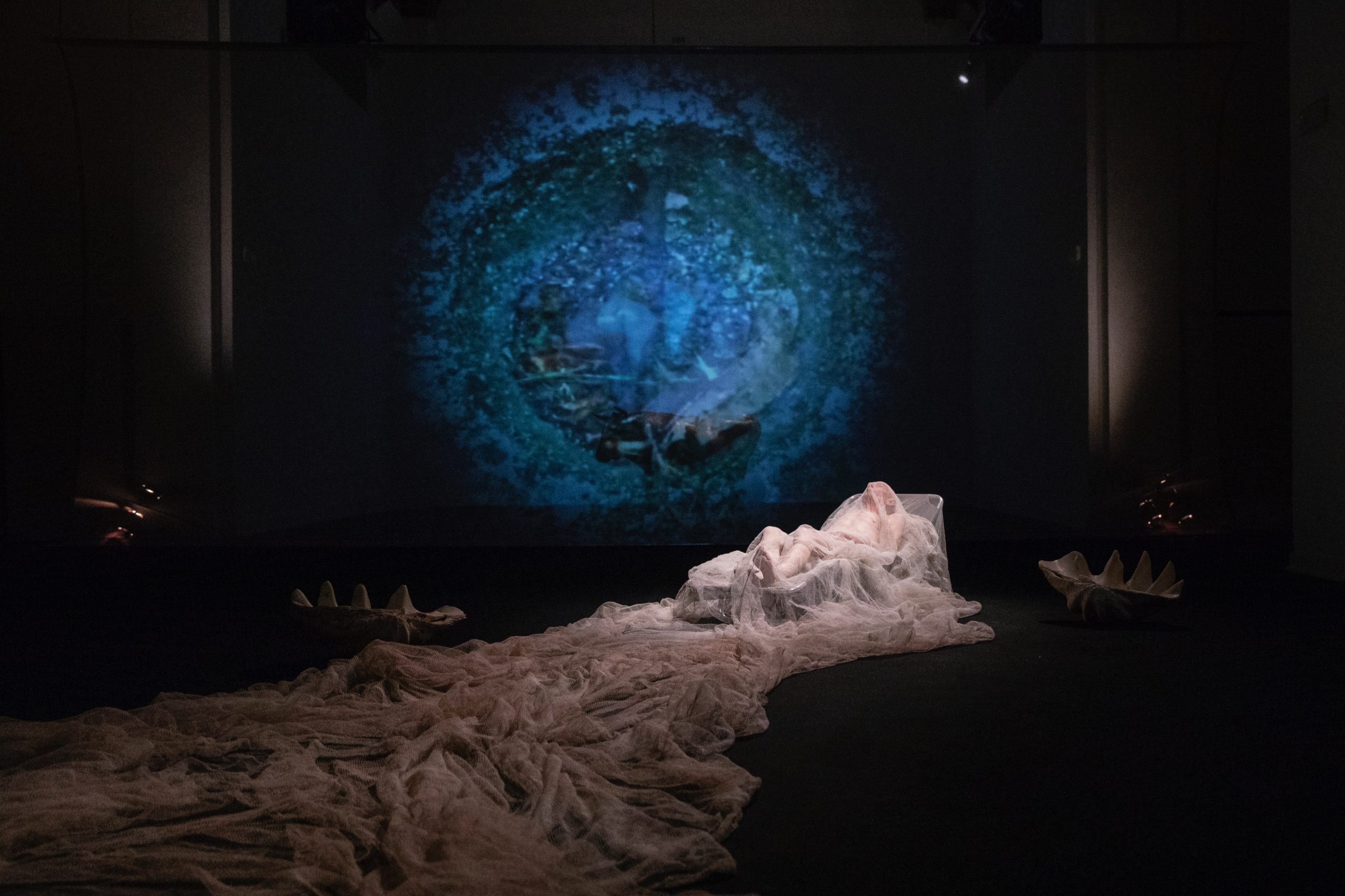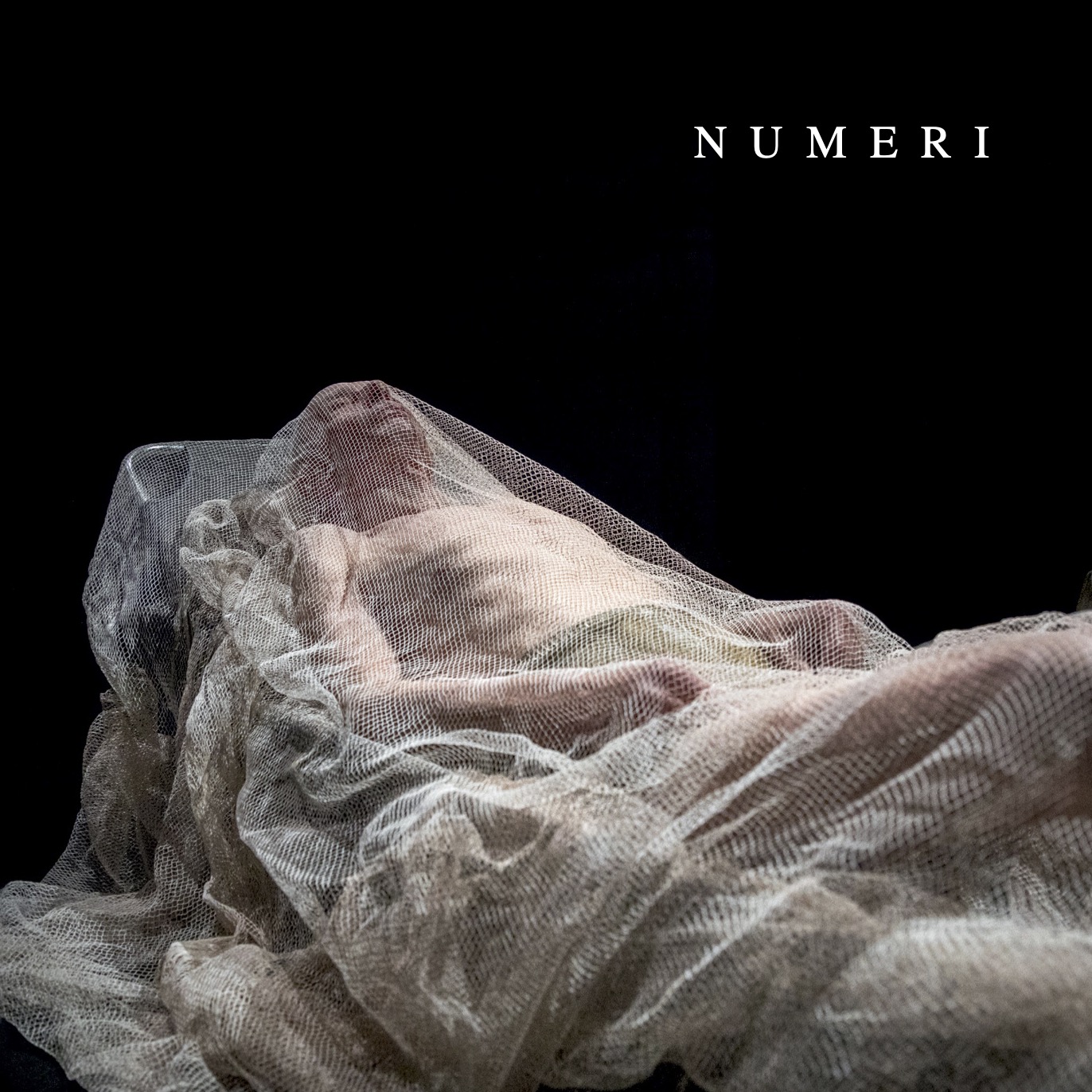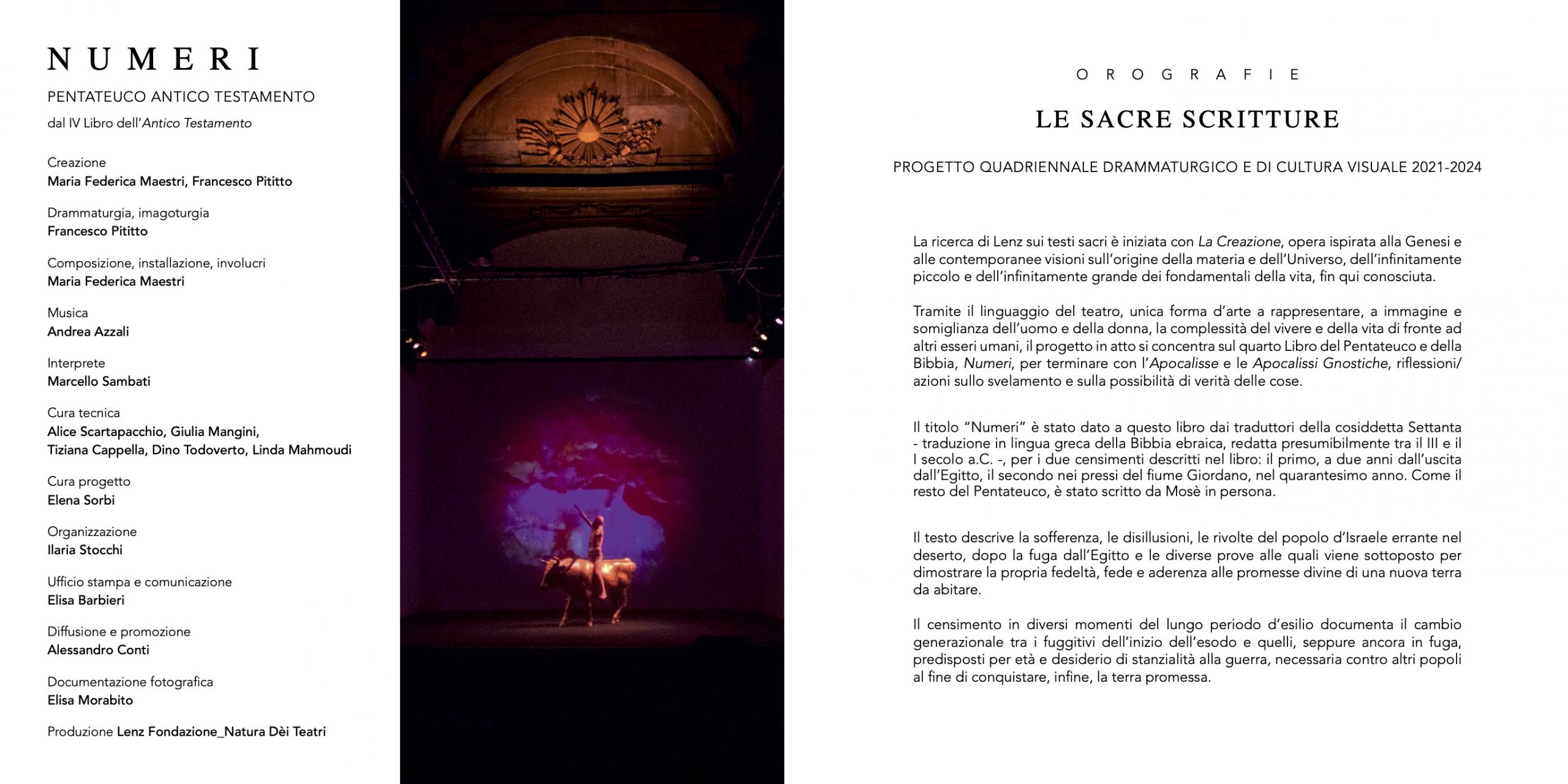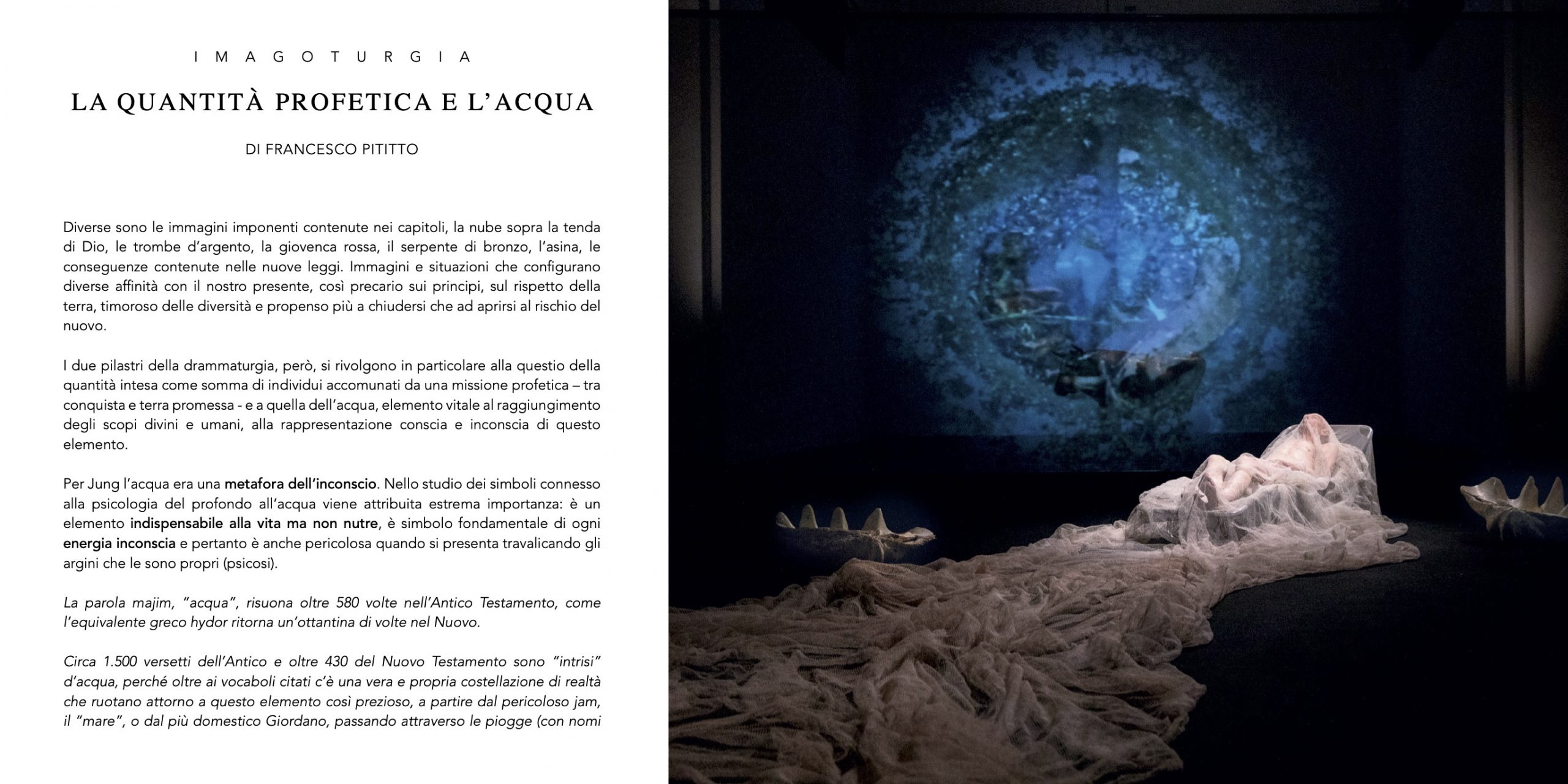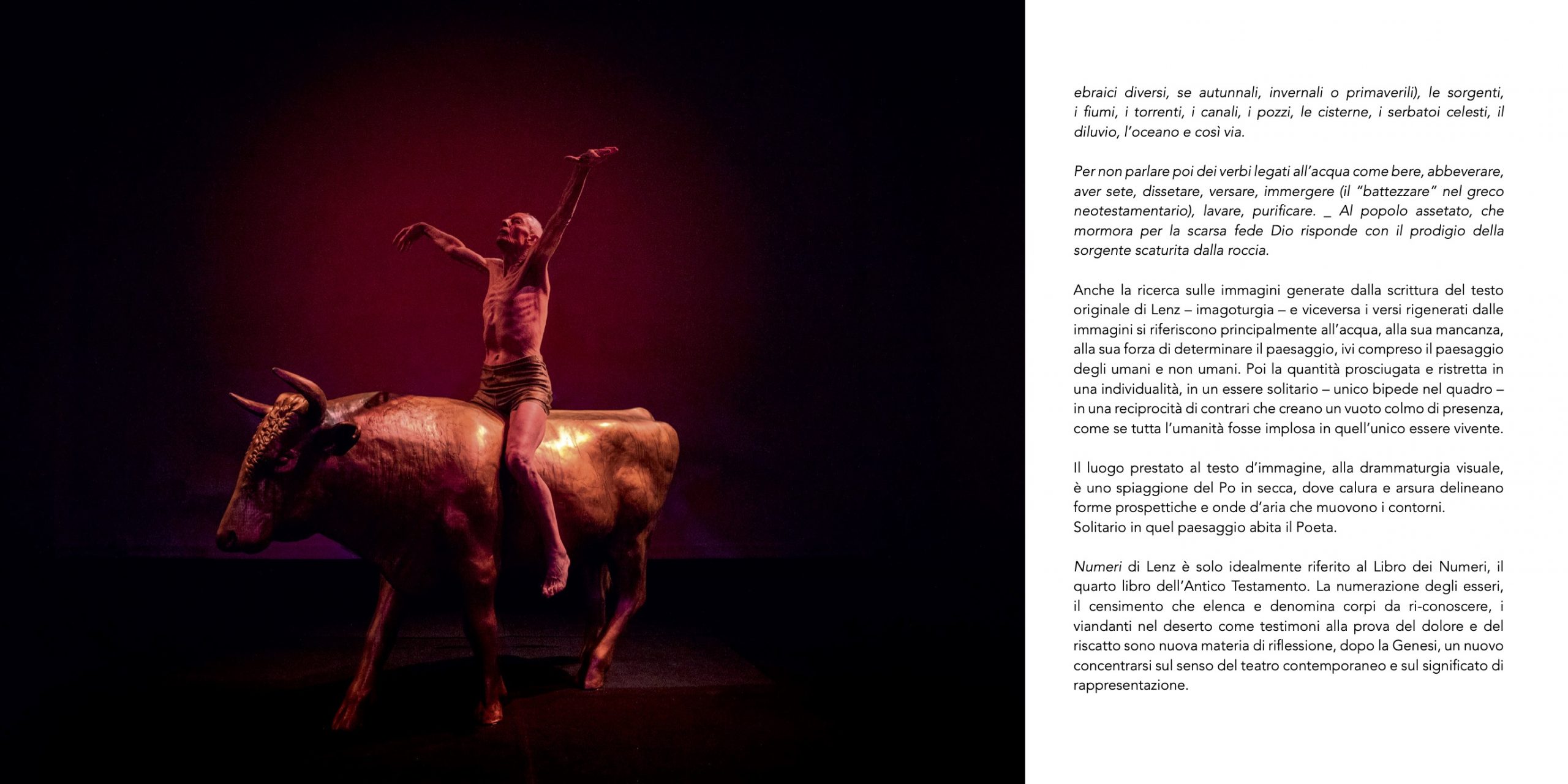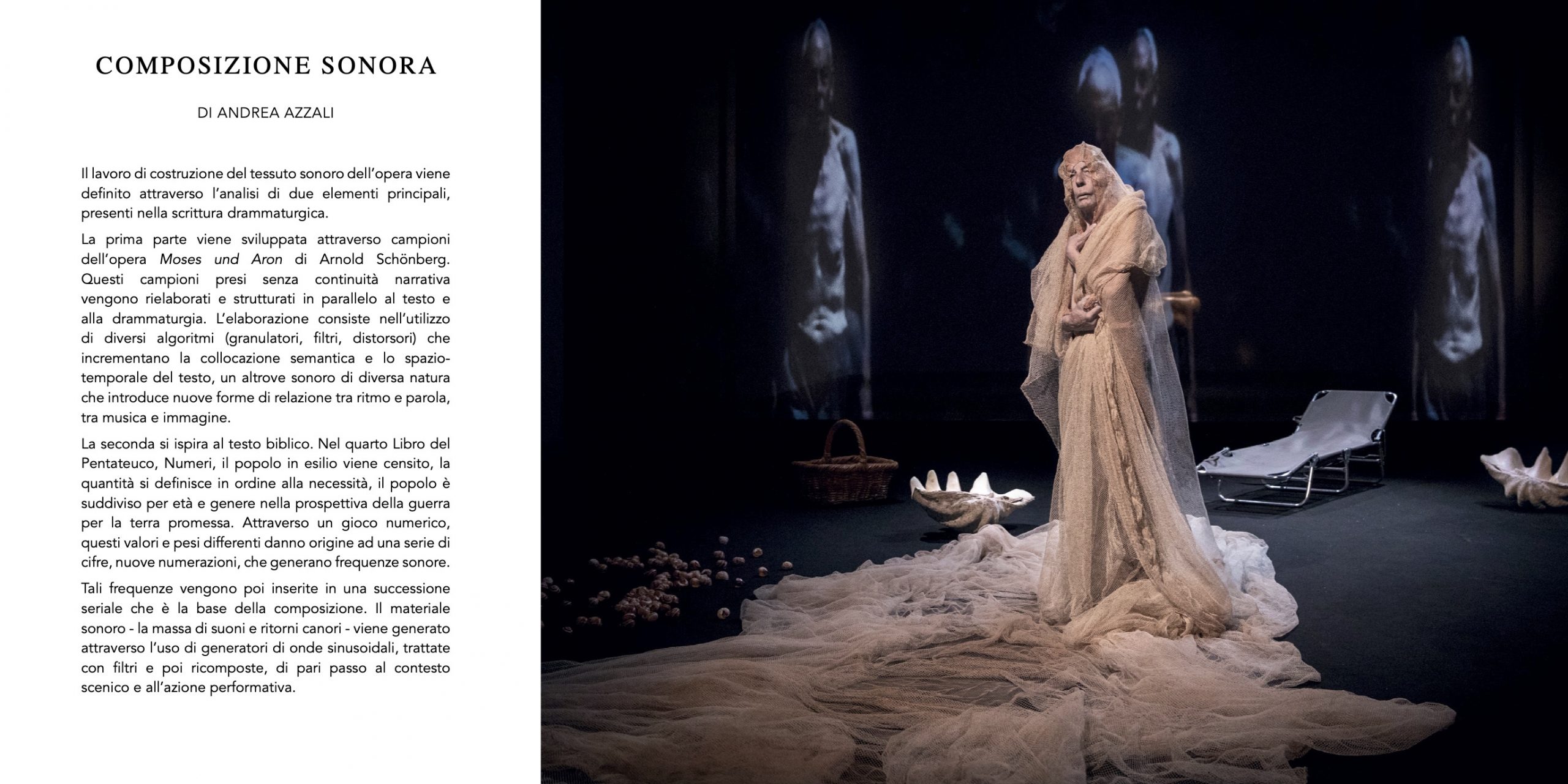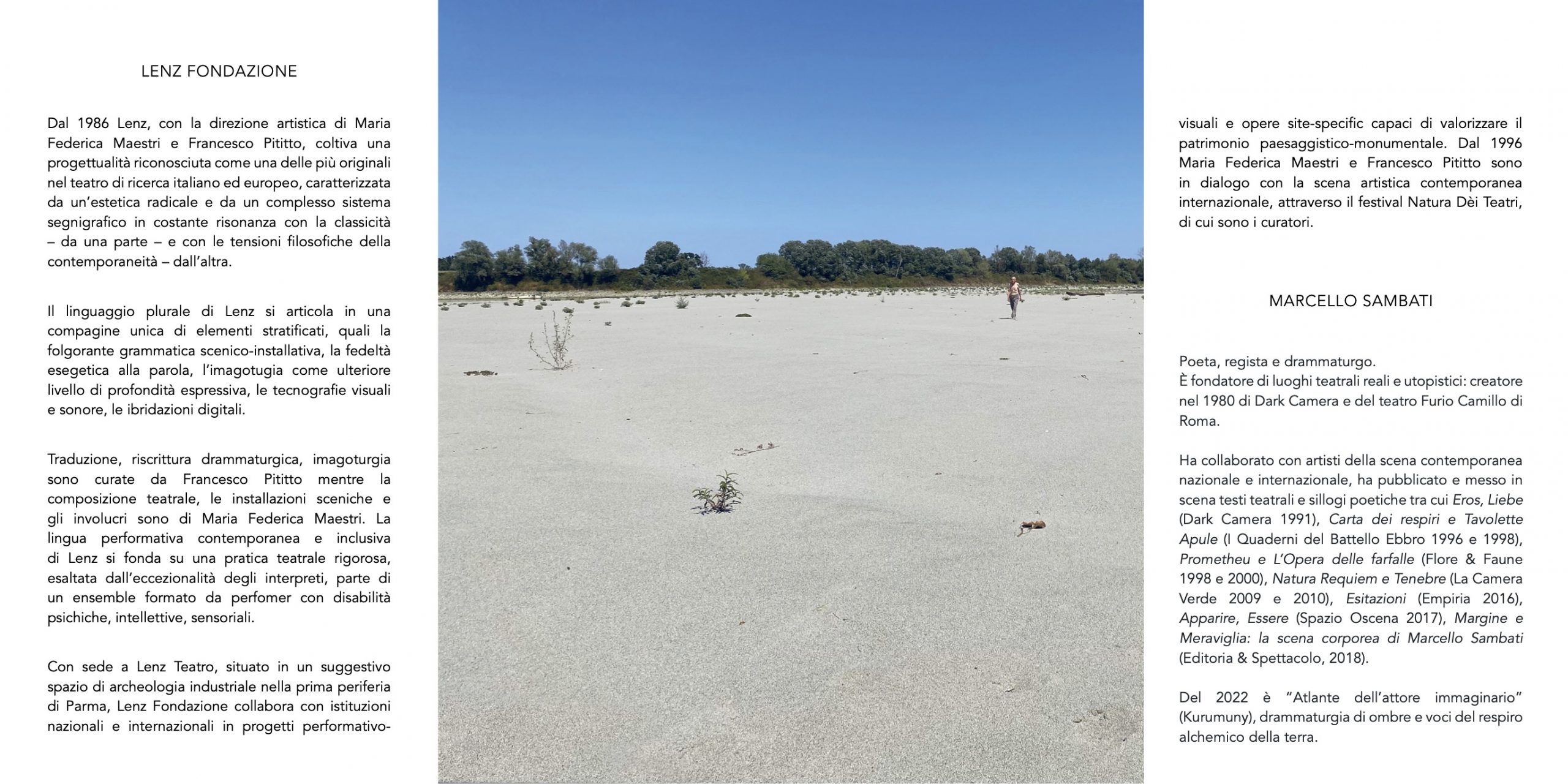
NUMBERS
Pentateuch Old Testament
From the IV Book of’Old Testament
The Holy Scriptures
Four-year drama and visual culture project 2021>2024
Lenz's research on sacred texts began with The creation, work inspired by Genesis and contemporary visions on the origin of matter and the Universe, of the infinitely small and the infinitely large of the fundamentals of life, known thus far.
Through the language of theatre, unique art form to represent, in the image and likeness of man and woman, the complexity of living and living in front of other human beings, the current project focuses on the fourth Book of the Pentateuch and the Bible, Numbers, to end withApocalypse and the Apocalissi Gnostiche, reflections/actions on the revelation and on the possibility of truth of things.
The title “Numbers” was given to this book by the translators of the so-called Septuagint – Greek translation of the Hebrew Bible, presumably written between the 3rd and 1st centuries BC. -, for the two censuses described in the book: the first, two years after leaving Egypt, the second near the Jordan River, in the fortieth year. Like the rest of the Pentateuch, it was written by Moses himself.
The text describes suffering, the disillusions, the revolts of the people of Israel wandering in the desert, after the escape from Egypt and the various tests to which he is subjected to demonstrate his loyalty, faith and adherence to the divine promises of a new land to inhabit.
The census at different moments of the long period of exile documents the generational change between the fugitives at the beginning of the exodus and those, although still on the run, predisposed by age and desire to stay in war, necessary against other peoples in order to conquer, In the end, the promised land.
The prophetic quantity and water
Text by Francesco Pititto
There are several impressive images contained in the chapters: the cloud over the tent of God, the silver trumpets, the red heifer, the bronze serpent, the donkey, the consequences contained in the new laws. Images and situations that configure different affinities with our present, so precarious on principles, on respect for the land, fearful of diversity and more inclined to close themselves off than to open up to the risk of the new.
The two pillars of dramaturgy, But, they address in particular the question of quantity understood as the sum of individuals united by a prophetic mission – between conquest and the promised land – and that of water, vital element to the achievement of divine and human purposes, to the conscious and unconscious representation of this element.
For Jung, water was one metaphor of the unconscious. In the study of symbols connected to depth psychology, extreme importance is attributed to water: it is an element essential to life but does not nourish, it is a fundamental symbol of every unconscious energy and therefore it is also dangerous when it appears to exceed its proper limits (psychosis).
The word majim, "water", resonates beyond 580 times in the Old Testament, like the Greek equivalent hydor it returns about eighty times in the New.
Circa 1.500 ancient verses and beyond 430 of the New Testament are "soaked" with water, because in addition to the words mentioned there is a real constellation of realities that revolve around this very precious element, starting with the dangerous jam, the sea", or by the more domestic Giordano, passing through the rains (with different Jewish names, if autumnal, winter or spring), the sources, the rivers, the torrents, channels, the wells, the tanks, the celestial reservoirs, downpour, the ocean and so on.
Not to mention the verbs related to water such as drinking, water, to be thirsty, quench thirst, deposit, immerse (“baptize” in New Testament Greek), wash, purifying. _ To the thirsty people, who murmurs due to lack of faith, God responds with the miracle of the spring flowing from the rock.
Even the research on the images generated by the writing of Lenz's original text - imagoturgy - and vice versa the verses regenerated from the images mainly refer to water, to his lack, to its power to determine the landscape, including the landscape of humans and non-humans. Then the quantity dried up and narrowed into an individuality, in a solitary being – the only biped in the painting – in a reciprocity of opposites that create a void filled with presence, as if all humanity had imploded into that one living being.
The place given to the image text, to visual dramaturgy, it is a dry beach on the Po, where heat and dryness outline perspective shapes and waves of air that move the contours.
The Poet lives alone in that landscape.
Lenz's Numbers is only ideally referred to the Book of Numbers, the fourth book of the Old Testament. The numbering of beings, the census that lists and names bodies to be recognized, the travelers in the desert as witnesses to the test of pain and redemption are new material for reflection, after Genesis, a new focus on the meaning of contemporary theater and the meaning of representation.
Noticing and reviving the traces of the here
Text by Maria Federica Maestri
Reveal the remains of the sacred | Reinstall the grave monument | Reflux the power plant voltage
OCCLUSION OF THE CHAPELS AND THE APSE
The apparition-painting occludes the vision of the space of the Eucharistic mystery and summarizes the transitory manifestation of life-giving natures. Electrical limit scrolling, disappearance of the horizon: chromatic reflection of tiny promised lands.
FUNERAL NATIVITY
The thin cradle perforated shroud-cloud-tent of Moses together with feminine wrapping-bandage of Miriam the leper sister – unique voice/body of a biblical woman – it is a post-marble vibration of the neoclassical and sentimental funerary monument (of the nineteenth century fallen into silence and oblivion) Maria Luigia's loving dedication to her morganatic husband.
PLATONIC STOUPS
In the malnourishing banquet the shell torn from the seabed, homophilous lover forever separated from her other half – calcareous and hard – it contains the unique and broken liquid pearl for the baptism of the old diviner, neoTiresia with withered breasts of Eliotian memory.
EXPOSURE OF THE Vaults
The concavity of the golden vaults reflected in the shells of gastropods – one in multiple and perpetual replication – contains the content of the only salvific act performed by the concave fertilizing hand of the fleshy valve of the Christian martyr (the church built in 985 d.c. it preserved the relics of Santa Felicola, the holy martyr who did not want to marry and sacrifice to idols).
THE LOST ALTAR
Depleted of his celebratory table, desertification of the word-body and blood of Christ, the cultic space becomes an anti-enclosure- sacrificial and animal adoration chamber, space of inebriation, of reinvigoration of the old Aaron, of the physical's claim to the metaphysical. The motionless calf dripping with fake gilding is the king of the amusement park. Solid and vitrified memory of the Holocaust, of sacrifice and pain is a hymn to joys without any otherworldly tomorrow. Idol of the withered member reaches out towards the faithful and the infidels with the warm tongue of the dream. The skeletal awakening of his skull garlands the return to my present.
Numbers
Pentateuch Old Testament | From the Fourth Book of the Old Testament
Creation | Maria Federica Masters, Francesco Pititto
Dramaturgy, imagoturgy | Francesco Pititto
Composition, installation, wrappers | Maria Federica Masters
Original music | Andrew Azzali
Interpreter | Marcello Sambati
Performative actions | Tiziana Chapel
Treatment | Elena Sorbi
Communication and press office | Elisa Barbieri
Organization | Ilaria Stocchi
Diffusion | Alessandro Conti
Technical care | Alice Scartapacchio, Giulia Mangini, Tiziana Cappella Dino Todoverto, Linda Mahmoudi
Assistant | Giulia Mangini
Photographic documentation | Elisa Morabito
Production Lenz Fondazione_Festival Natura Dèi Teatri
Made with the support and collaboration of:
MiC Ministry of Culture, Maeci, Emilia Romagna region, Municipality of Parma, AUSL Parma DAI SM-DP Integrated Mental Health Department for Pathological Addictions, University of Parma, Chiesi Farmaceutica, Monteparma Foundation, Conservatory of Music A. Boito of Parma.







